Episodes
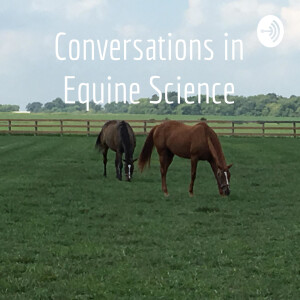
Friday Dec 18, 2020
Friday Dec 18, 2020
Research Reference:
McKeever, K.H. (2016) Exercising and rehabilitation of the older horse. Vet Clin Equine (32) pp. 317–332
Book Reference:
https://www.amazon.com/Horse-Blankets-Coolers-Sheets-proper-ebook/dp/B00PYSTEJQ/ref=sr_1_1?dchild=1&keywords=Horse+Blankets+by+Nancy+McLean&qid=1608259625&s=digital-text&sr=1-1
McLean, Nancy (2014). Horse Blankets, Coolers and Sheets...a Guide for Safe and Proper Use. (Amazon Kindle)
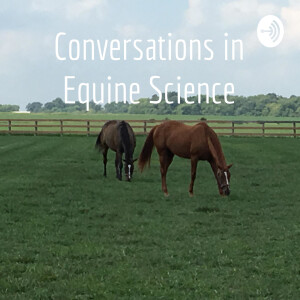
Friday Dec 11, 2020
Friday Dec 11, 2020
Reference Resources:
Winfield, J., Williams, J., and Dixon, M. (2013). The use of reflective practice to support mentoring of elite equestrian coaches. International Journal of Evidence Based Coaching and Mentoring Vol. 11, No. 1, February 2013 pp. 162-179.
Equilab App in the App Store.
Lisa Ashton on Facebook @ "Coffee for Horse Lovers".
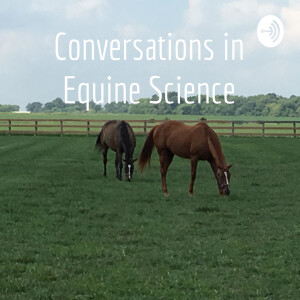
Friday Dec 04, 2020
Friday Dec 04, 2020
Reference Resource:
H. M. CLAYTON, S. DYSON, P. HARRIS and A. BONDI (2015), "Horses, Saddles and Riders: Applying The Science." Equine Veterinary Education, 27 (9) pp. 447-452.
doi: 10.1111/eve.12407.
www.saddleresearchtrust.com
Joyce Harman, DVM (2004). The Horse's Pain-Free Back and Saddle-Fit Book. Trafalgar Square Publishing, North Pomfret, Vermont, USA.
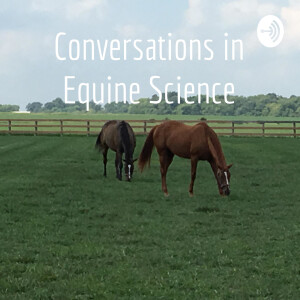
Friday Nov 27, 2020
Friday Nov 27, 2020
Reference Resources:
Schlote, Sarah. (2019) Security in Connection and Co-regulation: Safeguarding the Horse from Traumatic Re-enactments in EQUUSOMA.
Therapy Centers:
rideonstl.org
https://festinalente.ie/
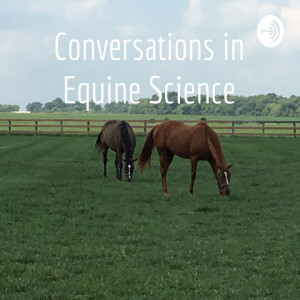
Friday Nov 20, 2020
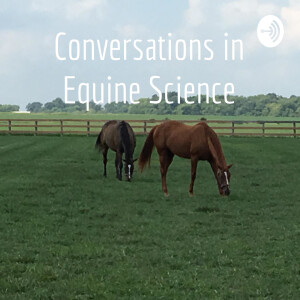
Friday Nov 13, 2020
Friday Nov 13, 2020
Join Kate and Nancy as they interview Tom Brodahl on the advantages of using water treadmills for the rehabilitation and conditioning of our equine companions and athletes.
www.hudsonaquatic.com
To contact Tom about the treadmills and/or spa: info@hudsonaquatic.com
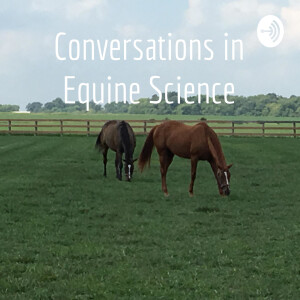
Friday Nov 06, 2020
Friday Nov 06, 2020
Reference List:
Barrey, Eric (2014). 'Biomechanics of locomotion in the athletic horse' Ch. 10 in Hinchcliff, KW, Kaneps AJ, & Geor, RJ. Equine Sports Medicine and Surgery, Saunders, Edinburgh. pp. 189-209.
Lameness Lab #1: https://youtu.be/PQ3iyoiZwA0
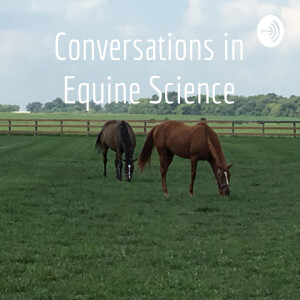
Friday Oct 30, 2020
Friday Oct 30, 2020
Research Reference:
Greco-Otto, Persephone et al., 2017. "Workload of horses on a water treadmill: effect of speed and water height on oxygen consumption and cardiorespiratory parameters". BMC veterinary research, 13(1), p.360.
Industry videos:
ECB:
https://youtu.be/NoFq_BOXcxU
Hudson Aquatics:
https://youtu.be/o-egugRbfJk

Friday Oct 23, 2020
Friday Oct 23, 2020
Research Reference:
Catalano, Devan N et al., 2019. The Effect of Goldfish (Carassius auratus) on Water Quality in Horse Stock Tanks. Journal of equine veterinary science, 79, pp.73–78.
Key "takeaways" :
Keep tanks clean. Water odor, temperature, turbidity and color will determine intake.
Horses should drink 1 gallon of water per 100lbs or for a 1,000 lbs horse = 10 gallons per day. Preferably 10 to 15 gallons/day. A horse eating fresh grass (pasture) will require less water while a horse eating hay usually requires more water.
A mentally and physically thriving horse is usually given required amounts of forage, water, movement (turnout) and social interaction with conspecifics.
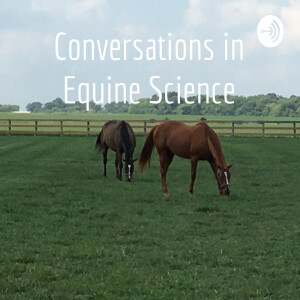
Friday Oct 16, 2020
Friday Oct 16, 2020
Research Reference:
Bulmer, Louise S et al., 2019. High-starch diets alter equine faecal microbiota and increase behavioural reactivity. Scientific reports, 9(1), pp.18621–11.
The equine digestive tract is better suited to a high fiber-fat low starch diet. This type of diet results in healthier microbial populations within the intestines and results in a more settled pattern of behavior. Horses are designed to eat small amounts more frequently mimicking grazing/trickle feeding behavior.





